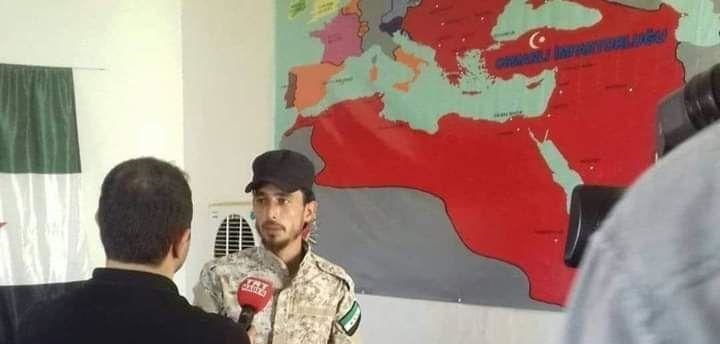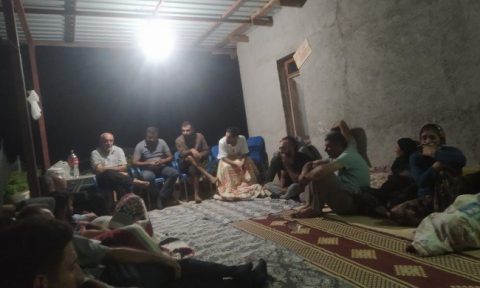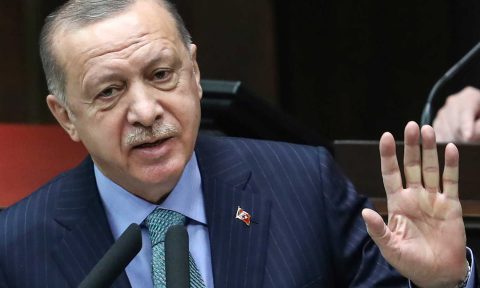Translated from German by IKHRW
This article tries to shed light on the terroristic tactics YPG has adopted in North-Syria – after the Turkish illegitimate invasion – shown by statistics collected between july 2018 and november 2019. The YPG has changed their tactics from direct military invasion to primarily hit-and-run-style assassinations and carbombings, showing the world their real (terrorist) face.
The increase of attacks in this fashion raise the question if the YPG is returning to their PKK nature, after it had changed their style from guerrilla tactics to direct military action in the Syrian civil war and the US-backed operations against ISIS. The YPG’s returning trend of using carbombings, hit-and-run-style assassinations and IEDs is clearly PKK textbook warfare, which the terrorist organisation has used in its terror campaign in South-East Turkey for 30 years. With the increase of these questionable attacks, US, Russia and other YPG supporting governments should rethink as to why they are engaging with a terrorist organisation.
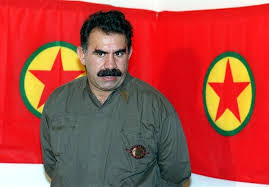
Origins of the PKK’s war strategy ‘Terror as a Tactic’
To understand the reasoning behind the YPG’s change of style in North-Syria, one must look at the reasoning behind the PKK’s attacks in Turkey. If we understand the framework these attacks fit into, we also understand its context. YPG and PKK use this style of attacks for a reason, not just for the sake of conducting attacks.
If we look at records of the first congress of the PKK, we can see that the organisation adopts Mao’s “Protracted War Strategy” and the Marxist-Leninist ideology.
People’s war, also called protracted people’s war, is a Maoist military strategy. First developed by the Chinese communist revolutionary leader Mao Zedong (1893–۱۹۷۶), the basic concept behind People’s War is to maintain the support of the population and draw the enemy deep into the countryside (stretching their supply lines) where the population will bleed them dry through a mix of mobile warfare and guerrilla warfare. It
was used by the Chinese communists against the Imperial Japanese Army in World War II, and by the Chinese Soviet Republic in the Chinese Civil War.
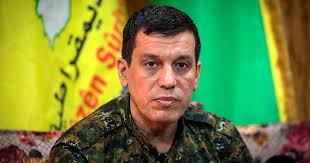
The PKK has encouraged violence as a “revolutionary strategy” to overthrow in military, political as well as economical terms. This was the only doable strategy, as it could have never won a face-to-face stand-off in Turkey.
The military strategy of hit-and-run-style attacks was at that point intended as a first stage of a wider rebellion of the masses, called ‘serhildan’, to accelerate political developments and gain popularity with the masses. After weakening Turkey’s authority over the region, a massive popular uprising would be incited. This uprising would completely overthrow the state and achieve revolutionary change in a short timespan. As a result of these hit-and-run-style attacks, the government would impose harsher security measures, driving the state and the people apart.
With the strategy of the PKK in mind, understanding the YPG’s terror tactics becomes a lot easier for outsiders. This may not be surprising for those who already knew YPG essentially is the PKK in Syria, just named differently, but nevertheless proves their strategies and goals do not differ from another.

YPG’s loss of territory
In 2016-2017, we witnessed the first Turkish invasion on Syrian ground, an operation called Euphrates Shield. As the name says, this operation was carried out by Turkish armed forces and Turkish-backed rebels in the region surrounding the river Euphrate. This operation eliminated the YPG’s initial goal of uniting its three cantons Afrin, Kobane and Hasakah.
The second insurgence started in march 2018 – an operation called Olive Branch – resulted in the loss of Afrin, one of three cantons and linked Idlib and Azaz. 300.000 kurdish civilians were displaced and 500 civilians were killed. The loss of Afrin was particularly painful for the YPG, as it interrupted all future plans and led to great loss in the kurdish population’s hope.
The third insurgence – an operation called Peace Spring – started in october 2019. This operation formed an even bigger blow to the YPG. The Turkish army and their proxies captured an area of 4,820 square kilometres, including Ras al-Ayn, Tell Abyad, Manajir, Suluk, Mabrouka and it cut the very important M4 highway. As a result, YPG had to let
the Syrian Army into its territory in Raqqah, Manbij, Tabqah, Kobani, Ayn Aissa and Tell Tamer.
Mentioning these operations doesn’t mean by any means that I agree with a Turkish invasion on Syrian grounds. It is meant to show the difficulties YPG experienced and how it changed its strategy as a result of it. While fighting ISIS, YPG used a style of attacking that most armies use, namely open military invasion. After the Turkish-led operations, we see a new trend of hit-and-run-style attacks, carbombings and IEDS.
Terror as a tactic: attacks by YPG in the Euphrates Shield area
For a quick overview of the attacks in the Euphrates Shield area, you can take a look at the following graphic. It is worth to know that 89% of the attacks were IEDs, 2% use of handgrenades and 9% consisted of gunfire.
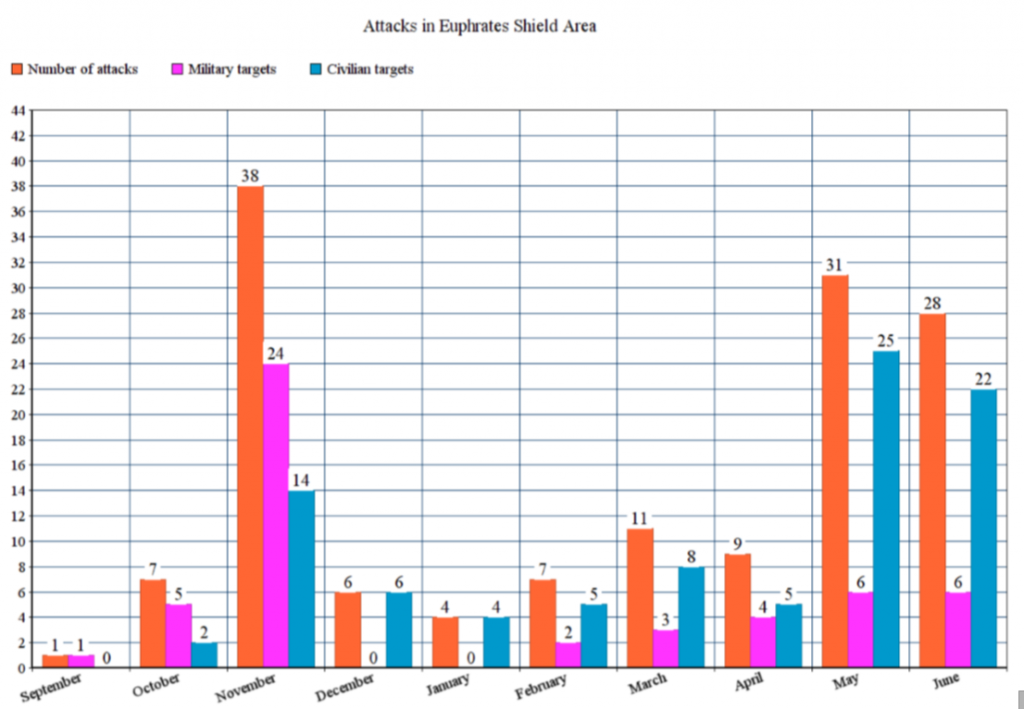
The cornerstone of hidden operations carried out by YPG in the Euphrates Shield area and the Afrin region was formed when YPG themselves started to announce their operations, in need of regaining popularity among the Kurdish population in North-Syria.
In June 2018, YPG leadership announced the formation of the “Wrath of Olives” forces. They declared the Turkish-backed opposition AND civilians dealing with them as targets of their operations.
In mid-December 2018, YPG leadership announced the formation of the Afrin Liberation Front. They were showcased as a branch of the YPG, designated to liberate the Afrin region of its Turkish occupiers. After the formation of this group, “Wrath of Olives” attacks decreased. The Afrin Liberation Front uses anti-guided missile attacks, thermal snipers, and usually launches from their Tell Rifaat-base.
In the monitored time span, the “Wrath of Olives” forces and the Afrin Liberation Front carried out 144 succesful attacks and many more attempts. All attacks were claimed by one of both organisations. With the ALF using different gear, in the Afrin region we can state that 75% of attacks were IEDs, 24% sniper assassinations and 1% missile attacks.

Terror as a Tactic: the impact of Operation Peace Spring
In October 2019, the Turkish army and their Syrian proxies insurged North-East Syria, which led to the withdrawal of the US forces from the area. The YPG had to draw back 30km from the Turkish border, after several days of heavy fighting and many casualties. A ceasefire was negotiated between Russia and Turkey by the end of the month.
During this operation, the YPG used its sleeper cells in the Afrin and Euphrates Shield regions to conduct several explosions, and abandoned a prison holding ISIS-members in Raqqah. The escape of these prisoners led to the ISIS resurgence that plagues the area until now. After the operation, we can see the YPG starting to use carbombings. It exploded 4 cars in a month in Tell Abyad, in al-Bab, Jarablus, Tell Khalaff and two in Ras al-Ayn.
Terror as a Tactic: Motives
I have discussed the origins of ‘terror as a tactic’ before, showing you the PKK’s signature strategies which it has adopted and used since the foundation of the terrorist organisation. As there is no difference between the YPG and the PKK, other than its name, it is easy to see how YPG leadership falls back to old habits.
As for the motives behind the hit-and-run-style attacks and IEDs of the YPG in North-Syria, we can notice different motives.
One of them is trying to make YPG-controlled areas look like a safe haven. There are less explosions, less civilian casualties, compared to the areas controlled by Turkish-backed groups. Civilians in the area are scared, which also slows back the return of refugees to the area and leads to more Kurdish civilians to migrate to YPG-held territory. It also helps in the YPG’s PR campaign in the international community, mainly in the West. The paradox is here, that YPG themselves play a big role in those areas being unsafe.
Also, just like described before as the initial strategy of the PKK in South-East Turkey, a desired effect of these attacks is that security forces have to imply harsher security measures. This divides the militia controlling the territory and the people even more, creating distrust between both parties.
Conclusion
This article does not by any means legitimize the Turkish invasion on Syrian ground, but is meant to shed light on the strategy the YPG implements in its lost territories. This strategy is directly linked to the PKK’s initial strategy, as was announced on its first congress.
The strategy, which I call ‘Terror as a Tactic’, of using hit-and-run-style attacks, assassinations and carbombings are considered warcrimes. In these attacks, civilians are not seperated from military targets, and ther targets get hit in a destructive and inhuman way.








